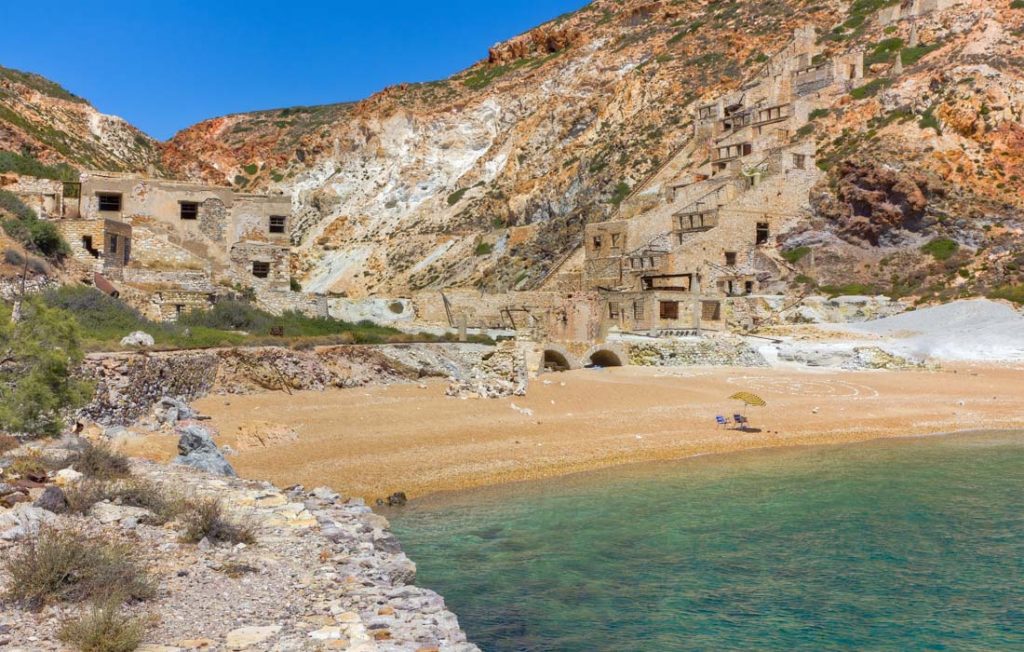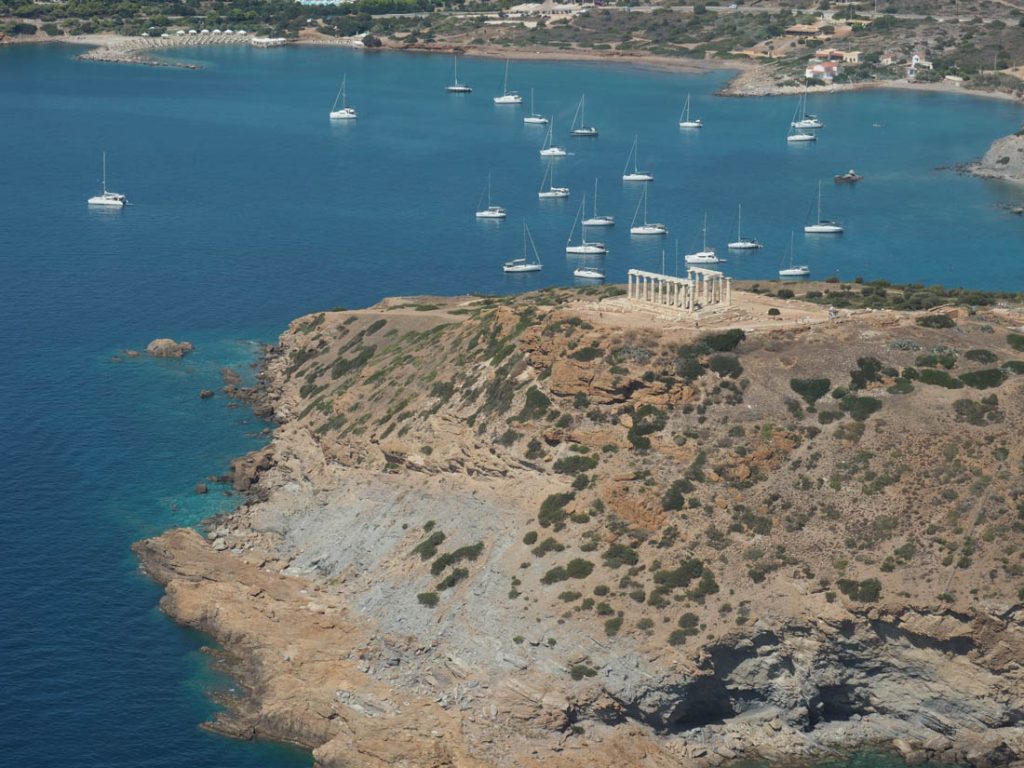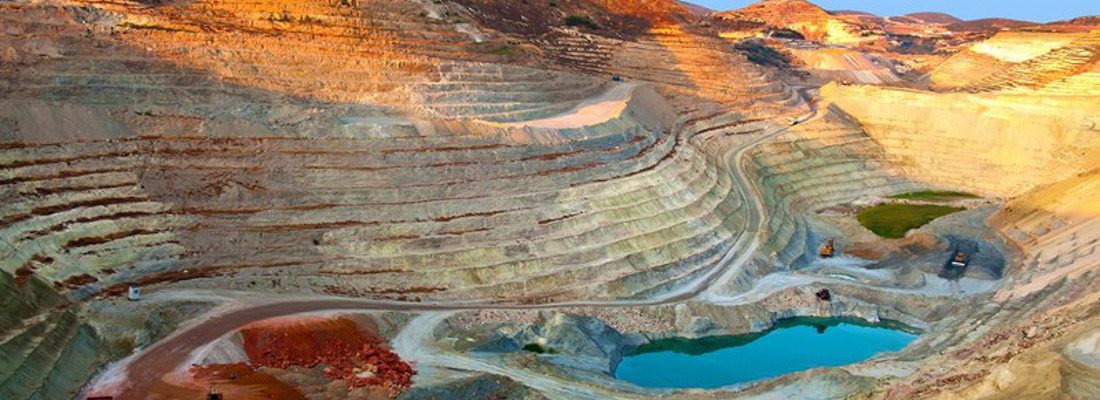Greece’s mineral wealth has contributed enormously to its economy and history. It also contributed to culture: ancient coins, vessels, and jewelry are among the precious objects that remain, testaments to both craftsmanship and economic might. And not least, Greece’s mineral wealth contributed to the ancient Greece’s strength as a naval power, shaping its destiny. Greek mining is of tremendous historical importance, as well as a very important source of wealth today.
Milos – obsidian, perlite, bentonite
The volcanic island of Milos has given it a fascinating geological history. Obsidian, an igneous rock, is a volcanic glass, often of deep black, sometimes gray. Extremely hard and also breaking with very sharp edges, it was sought after for excellent cutting tools as early as the Neolithic era. It was a valuable commodity, and Milos started to trade it in the Bronze Age beginning around 1800 BC.

Perlite, another volcanic mineral, has many industrial applications, especially in construction, making it also a valuable export. Milos has been commercially mining perlite since the middle of the 20th century, mining some 500,000 tonnes each year.
Bentonite mines are functioning at Aggeria. Bentonite has many applications, including clay and cosmetics. The Aggeria mine, in particular, is a site of geological wonder, a fascinating place to visit when on Milos.
Sounion – lead, silver, and copper
Cape Sounion is most famous for the Temple of Poseidon, but neighboring Lavrio is a destination of enormous archaeological and geological interest – the ancient mines.

Even in the Neolothic age, the copper deposits and lead were mined here. In the Bronze Age, (3200 BC). Lavrio’s mines were a source of wealth for Greece’s great Bronze Age civilizations: the Mycenaean, the Minoan, and the Cycladic. All benefitted from the mines’ wealth of silver, lead and copper.
In the Classical era, the mine was at its height of productivity. Thousands of enslaved men labored at mining galena – used to extract silver, an extremely valuable commodity and source of wealth of Ancient Athens. The wealth from silver contributed greatly to the glory and the dominance of the city. It was from this silver that the famous “owl” coin of Ancient Athens was minted. The silver funded the building of the “Triemes’ – the ships that prevailed over the Persians in the Battle of Salamina. This wealth also helped generally to fund the great program of construction and generally the cultural flourishing we now refer to as the “Golden Age.”

The mines were spread over a vast area – 120 km2 from Mt Paneion, to Cape Sounio and Legraina. It is both an archaeological site and a UNESCO World Heritage site.
After the Peloponnesian wars, Athens did not have enough enslaved men to continue the brutal work of mining. The mines were abandoned in time, falling into slow decline during the 3rd century BC, and closing altogether by the 6th century AD. However, in 1864 were reopened again by both Greek and French interests. Lead and silver were mined, and then zinc, through the 1950s. By 1978, the sources had been depleted.
Visiting sites of mineral wealth today
 The dramatic landscapes of quarries and mines can be very interesting for a hike. In Milos, hiking at Nychia brings one to the site of obsidian mines, while at Aggeria one can visit the still active bentonite mine with its astonishing colors as well as sweeping views of the landscape from an observation point. When visiting the Temple of Poseidon at Sounion, one can also arrange to see the ancient silver mines in Lavrio.
The dramatic landscapes of quarries and mines can be very interesting for a hike. In Milos, hiking at Nychia brings one to the site of obsidian mines, while at Aggeria one can visit the still active bentonite mine with its astonishing colors as well as sweeping views of the landscape from an observation point. When visiting the Temple of Poseidon at Sounion, one can also arrange to see the ancient silver mines in Lavrio.
Mining in Greece
On account of the history in the case of Lavrio and Sounio, and of course the location – the mines of Sounio make a fascinating destination. On Milos, the enormous mineral wealth is one of the attractions – this volcanic island, known for its fantastic and unique beaches, is also of minerological and geological interest inland.
Have you visited any mines, either ancient or active today, while in Greece?





